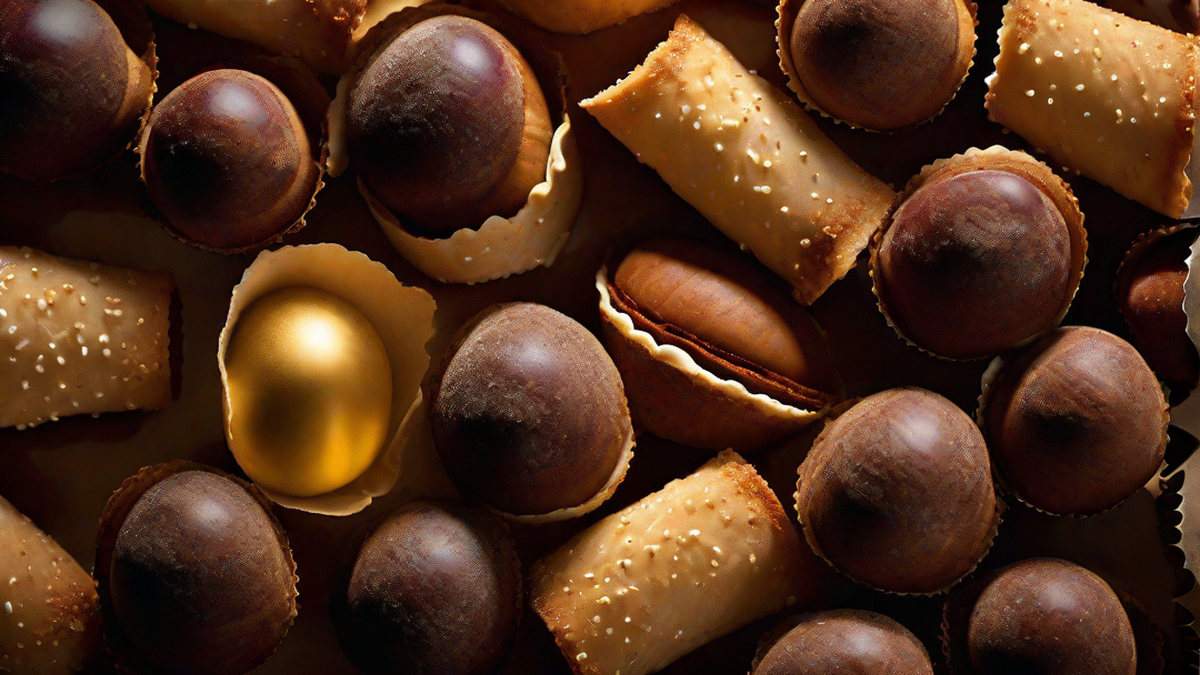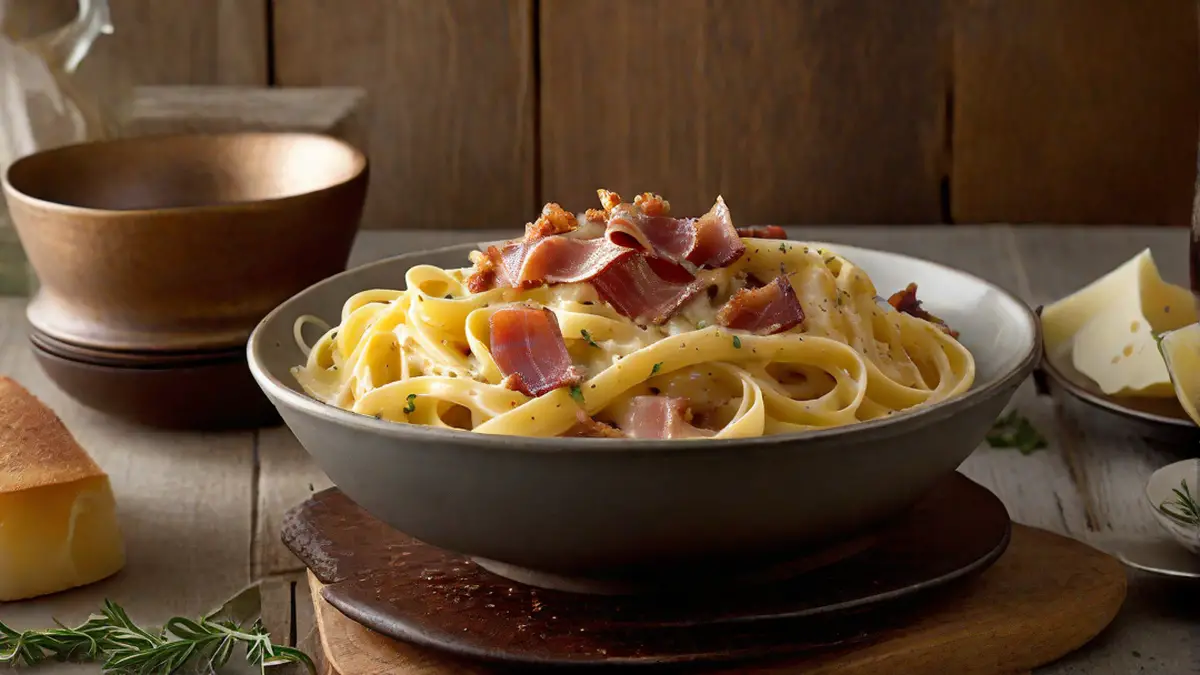Welcome, wine lovers, passionate connoisseurs and those who simply enjoy a drink! Get ready to embark on a journey into the enchanting world of Barleywine. This isn’t any ordinary beverage; it’s a captivating deep red elixir with a fascinating history and a complex flavor profile that transcends time. Barleywine is a daring brew that beautifully bridges the gap between beer and wine showcasing the artistry of brewing. But hold on there’s more, to this experience! You’re not just here to learn about this drink; you’re here to become a master at crafting it yourself. So buckle up unleash your curiosity and lets dive headfirst into our thrilling exploration of Barleywine. We guarantee it will be an exhilarating ride of delightful surprises!
Understanding Barleywine
Barleywine, an ale often confuses people due to its misleading name. Despite the name it is actually a type of beer than wine. Lets explore this brew in greater detail.
To start with barleywines are known for their flavors and high alcohol content. They typically range from 6 12% ABV or even higher. Originating from England they typically have an amber to brown color. When it comes to taste expect a delightful combination of fruity, hoppy and malty notes.
The brewing process for barleywine is quite distinctive well. Brewers use amounts of malted barley, which explains the name ‘barleywine’. The high sugar content, from these malts leads to a robust fermentation process and ultimately results in a higher alcohol concentration.
Brewing barleywine requires artistry combined with patience and precision. It involves a boiling of the wort to caramelize the sugars giving it its distinct flavor profile and coloring.
Now lets discuss another aspect of barleywines; aging. Unlike beers that are best enjoyed fresh barleywines actually improve with age! Aging allows the flavors to mellow out and harmonize over time creating an sophisticated drink.
Lastly it’s worth noting that serving temperature plays a role when it comes to enjoying this potent brew.
Unlike your beers that are meant to be served chilled barleywines should be enjoyed at a cellar temperature of around 55 60°F. This temperature allows the complex flavors of barleywine to truly shine.
To sum it up barleywine is a beverage that blurs the boundaries, between beer and wine providing drinkers with the best aspects of both worlds!
Ingredients Needed for a Classic Barleywine Recipe
Barleywine is a beer style that offers a blend of richness, complexity and intense flavors. It’s the choice to savor slowly especially during chilly evenings. So what does it take to brew this timeless classic in the comfort of your home? Lets delve into the ingredients for crafting a traditional Barleywine recipe.
The foundation of any Barleywine lies in its malt selection. To achieve results you’ll need a substantial quantity of base malt like Maris Otter or 2 Row Pale Malt. These varieties provide the source of fermentable sugars for your brew. For a five gallon batch expect to utilize 14 to 20 pounds.
In addition to base malts specialty malts play a role in developing the deep flavors that define Barleywine. Consider incorporating Crystal malt for hints of caramel and Special B malt for raisin undertones. To enhance both color and complexity small amounts of Chocolate or Black Patent malts can be utilized.
While hops may not take stage in Barleywine as they do in other beer styles they still contribute significantly to achieving a harmonious balance. Opting for English hop varieties such, as East Kent Goldings or Fuggles works well—a modest quantity of approximately two to three ounces should suffice.
Selecting the yeast is another critical aspect when brewing Barleywine; you’ll want a strain capable of handling high alcohol levels while imparting desirable flavors. English Ale yeast is a choice as it adds fruity esters that perfectly complement the robust malt foundation.
Lastly don’t overlook the importance of water! It’s crucial to use high quality brewing water when making your beer at home. You might want to consider using spring water or filtered tap water for the possible outcome.
To sum it up crafting your own Barleywine requires meticulous ingredient selection but the end results are truly rewarding! Armed with these ingredients you’re all set to embark on a barley wine brewing journey!. Remember; patience is key when it comes to brewing this style. Allow time, for fermentation and aging so that all those rich flavors can fully develop.
Step-by-Step Guide to Brewing Barleywine
Barleywine, an ale with a wealth of flavors often demands careful brewing. It’s not your run of the mill beer; instead it takes you on a journey into the realm of bodied beverages that require patience. Here’s a step by step manual for crafting your own Barleywine.
Step one; Gathering Your Ingredients. To create a Barleywine recipe you’ll need malt extract, specialty grains, hops, yeast, as well, as water and priming sugar. The specific amounts depend on the desired strength and batch size.
Step two; The Mash. This involves steeping your grains in water to extract the sugars that will later ferment into alcohol. It’s important not to rush this process; the longer you allow it to steep the more potent your brew will become.
Step three; The Boil. After mashing you’ll proceed to boil the mixture while adding hops at intervals to achieve a harmonious balance of flavor and bitterness. This stage is crucial; precise timing can. Make or break your final product.
Step four; Fermentation. Once the mixture has been boiled and adequately cooled down it’s time to introduce yeast for fermentation to begin its magic. Given their alcohol content Barleywines typically require several weeks or even months for fermentation.
Lastly;. Aging.
Once the fermentation process is finished you’ll need to bottle the beer and add some priming sugar to carbonate it. After that it’s important to let it age for a months before enjoying its rich and intricate flavors. Brewing Barleywine is truly an art that requires patience. The end result is a bold and flavorful beverage that makes all the hard work worthwhile.
Aging and Conditioning of Barleywine
The aging and conditioning of barleywine an overlooked aspect play a significant role in shaping its final flavor profile. It’s not just about the brewing process itself; there is much more to it. The aging process actually contributes to the character of your barleywine.
Barleywines are naturally complex ales bursting with rich malt flavors. But here’s the exciting part. They improve with age! Yes you heard it right. Similar to wine barleywines develop beautifully over time.
Now lets discuss conditioning. This step is vital for your barleywine to reach its potential. Conditioning occurs after primary fermentation concludes but before bottling commences. During this period yeast cells work on breaking down any by products from the initial fermentation stage.
However it’s important to note that this process takes time! Patience is key when conditioning barleywines since they may require months or even years to fully mature based on the brewers preference. While waiting for your brew might feel like an eternity, for beer enthusiasts eager to sample their creation I can assure you that it will be worth every moment!
And don’t worry about commas here; our sentences are concise and crisp—just like a well aged glass of barleywine should be.
Therefore it is important to keep in mind that aging and conditioning play a role in the brewing of barleywine. They are not just steps but rather essential components that contribute to the flavor, aroma and overall enjoyment of this distinctive beer style.
To sum up it is advisable not to hurry the process of brewing barleywine. Give it time to mature naturally and you will be duly rewarded with a beverage that offers a wealth of complexity and depth—a true testament to your prowess, as a brewer.
Flavor Profile and Variations of Barleywine
Barleywine is such a topic. It’s an ale style that originates from England. And lets talk about its flavor profile. It’s incredibly rich and complex.
Just picture this. Malt flavors, hints of robust fruit and a subtle warmth of alcohol. That’s what you can expect from a barleywine. But hold on there’s more.
Now lets dive into the variations. The English version tends to strike a balance between sweet maltiness and hop bitterness.. The fruity esters coming from fermentation add even more depth.
Then there’s the American Barleywine, which puts a twist on the traditional style. It leans towards a hop forward taste while still keeping that intense malt foundation intact.
The flavor journey gets more exciting with aging. As barleywines mature over time they develop layers of complexity. Think dark fruits like prunes or raisins and delicious notes of caramel or toffee.
Calling barleywines “unique” is an understatement! These beers are like adventures in flavors offering opportunities, for exploration and enjoyment.
But here’s something important to remember. No two barleywines are alike; each brewer adds their own special touch resulting in distinctive versions of this classic ale.
Tips for Perfecting Your Homemade Barleywine
Barleywine, an ale with its origins deeply rooted in England is a beloved choice among homebrewers. Its intricate flavors and robust complexity make it an excellent option for those seeking to create something unforgettable. However achieving the perfect homemade barleywine requires time, precision and a solid understanding of the brewing process.
The first crucial tip for crafting a barleywine is selecting high quality ingredients. This beer style heavily relies on malted barley to establish its flavor profile. Its recommended to choose suppliers and experiment with different types of malt until you discover one that aligns with your taste preferences.
Maintaining temperature control during fermentation plays a vital role in achieving the desired taste and alcohol content. Barleywines typically fall within an alcohol by volume (ABV) range of 8 12%. To achieve this ABV without encountering off flavors or stalling fermentation maintaining a consistent temperature is essential.
Next on our list is aging. Barleywines significantly benefit from aging periods. Many beginners tend to rush this step. Patience truly pays off when it comes to brewing barleywine. Some of the finest examples have been aged for six months up, to a year or even longer.
Lastly lets delve into yeast health considerations.Having a population of yeast is crucial for achieving thorough fermentation and adding a distinctive taste to your brew. It’s important to ensure that you pitch an amount of yeast and provide them with the necessary nutrients.
In summary using high quality ingredients is vital maintaining optimal fermentation temperatures is key allowing time, for aging without rushing it and taking proper care of your yeast population are all essential steps to successfully craft an outstanding homemade barleywine.
Pairing Food with Barleywine
Barleywine, an powerful ale is far from your average brew. With its flavors and high alcohol content it offers more than just a beverage—it provides an unforgettable experience. When it comes to pairing food with this drink careful thought is required.
The complexity of Barleywine often arises from its aging process. As time goes by the beer can develop notes of caramel, toffee, fruit or even subtle hints of vanilla. This diverse range of flavors makes it a versatile companion for dishes.
When considering pairings with Barleywine one can’t. Think of strong cheeses. Aged cheddar or gorgonzola are choices as they can withstand the robust nature of this ale. The sharpness and creaminess of these cheeses complement the sweetness and complexity found in the beer.
In addition to cheese hearty meats also harmonize well with Barleywine. Dishes like beef stew or lamb shank are examples. Their rich flavors perfectly match the taste profile of barleywine without overpowering it.
Lets not forget about desserts! Just imagine savoring your barleywine alongside a slice of apple pie or sticky toffee pudding. The sweetness present, in both the dessert and beer will intertwine beautifully on your palate.
Course it’s important to remember that every barleywine is distinct—some may be sweeter while others more bitter—and everyones personal tastes vary as well.
It’s important to experiment and explore combinations to find the perfect match.
To summarize don’t let the strong and complex nature of barleywine scare you when it comes to pairing it with food. Its rich flavors can elevate a variety of dishes whether its a cheese platter, a hearty main course or even a sweet dessert. This combination is sure to create a dining experience that you won’t forget.
Health Benefits and Risks of Consuming Barleywine
Barleywine is an unique drink that has been cherished by people for centuries. It’s not about the delicious flavors and captivating scents; this beverage also holds the potential for promoting good health. However it’s important to strike a balance between these benefits and the potential risks.
One of the advantages of barleywine lies in its composition. Packed with antioxidants it can help combat free radicals. These are damaging compounds that can cause harm to our cells if left uncontrolled. By enjoying barleywine in moderation on a basis you may be able to support your body in fighting off these detrimental effects.
Furthermore barleywine boasts an abundance of flavonoids. These powerful compounds are renowned for their inflammatory properties. Adding drinks like barleywine to your diet might assist in reducing inflammation within your body ultimately contributing to overall health and well being.
Nevertheless with these benefits in mind it’s crucial to approach drinking barleywine or any alcoholic beverage responsibly. The key word here is moderation. Consuming amounts may lead to negative health consequences such as liver damage or dependency issues.
Considering that barleywine has a high alcohol content compared to other beers it should be enjoyed with care and responsibility. Engaging in drinking can result in immediate effects like impaired judgment as well, as long term complications including chronic diseases.
In summary while savoring a glass of barleywine may offer some health advantages excessive consumption could result in complications. Like, with any aspect of life maintaining a sense of equilibrium is crucial when integrating this strong beverage into your daily routine.




